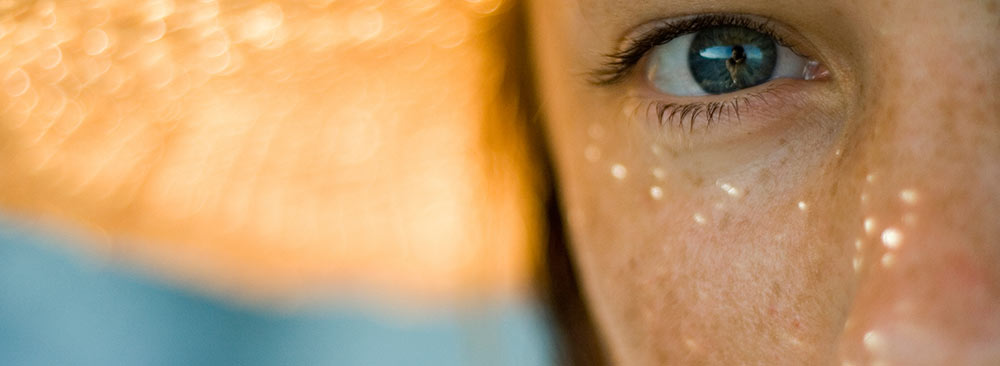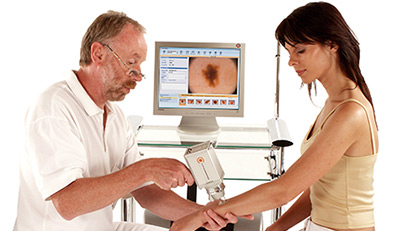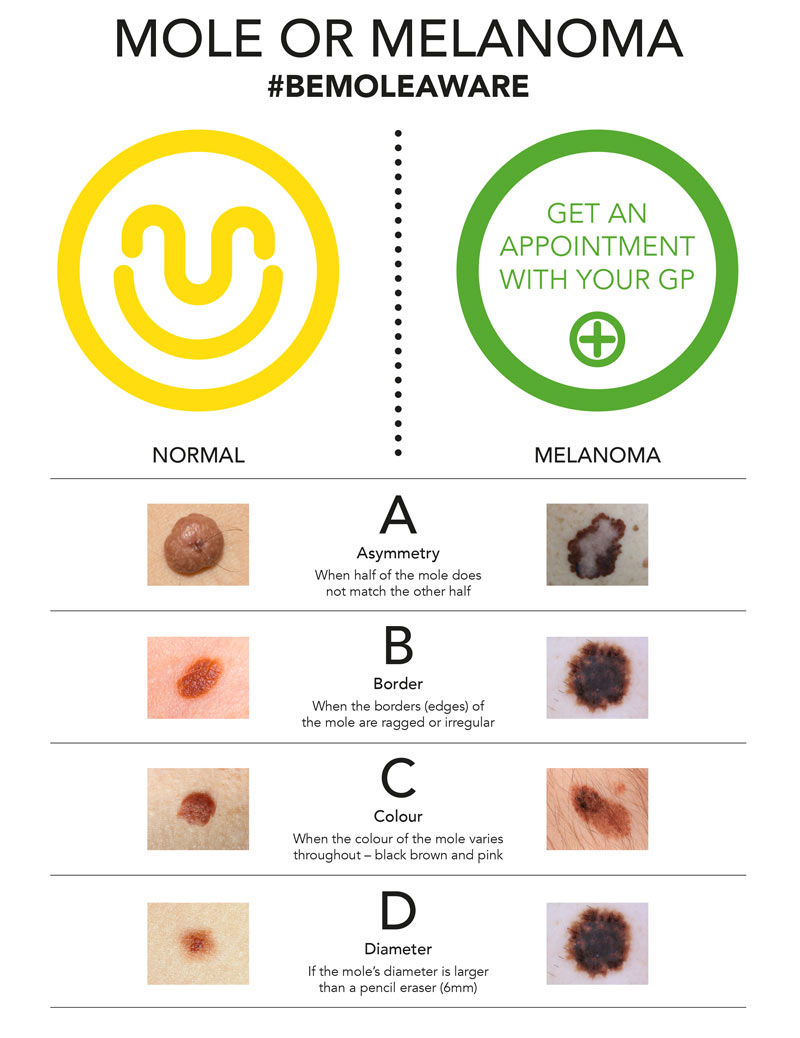#BeMoleAware
Skin cancer is the most common form of cancer in the UK, and is on the rise, with rates increasing more quickly than any of the other ten most common cancers.
Call us

Skin cancer is not just a problem in the southern hemisphere, it’s on our doorsteps too and we all need to #BeMoleAware.
Signs & symptoms

It can be difficult to tell the difference between a non-cancerous mole and a cancerous one, particularly if you have a lot of moles or freckles. But there are some tell-tale signs that you can look out for.
Is the mole:
- Getting bigger
- Changing shape
- Changing colour
- Bleeding or becoming crusty
- Itchy or painful

#BeMoleAware - Self checking
- Everyone should check their skin and moles every three months
- Those at risk should have a trained doctor examine them at least once a year
- Pay close attention to all areas of your skin, even those that that are not exposed to the sun
- Don't forget to check those hidden areas - your back, soles of your feet, scalp etc
- Get a friend or partner to help you
What to do if you have any concerns?
- Go to your GP
- If you notice any changes to any of your moles, or you have a mole that you are worried about don’t delay and contact your doctor
- Your GP will examine your skin and if they think that your mole looks as if it might be melanoma, they will arrange for you to see a dermatologist
- Visit our mole mapping, mole assessment and mole removal pages
- Dr Girish Gupta, consultant dermatologist.
